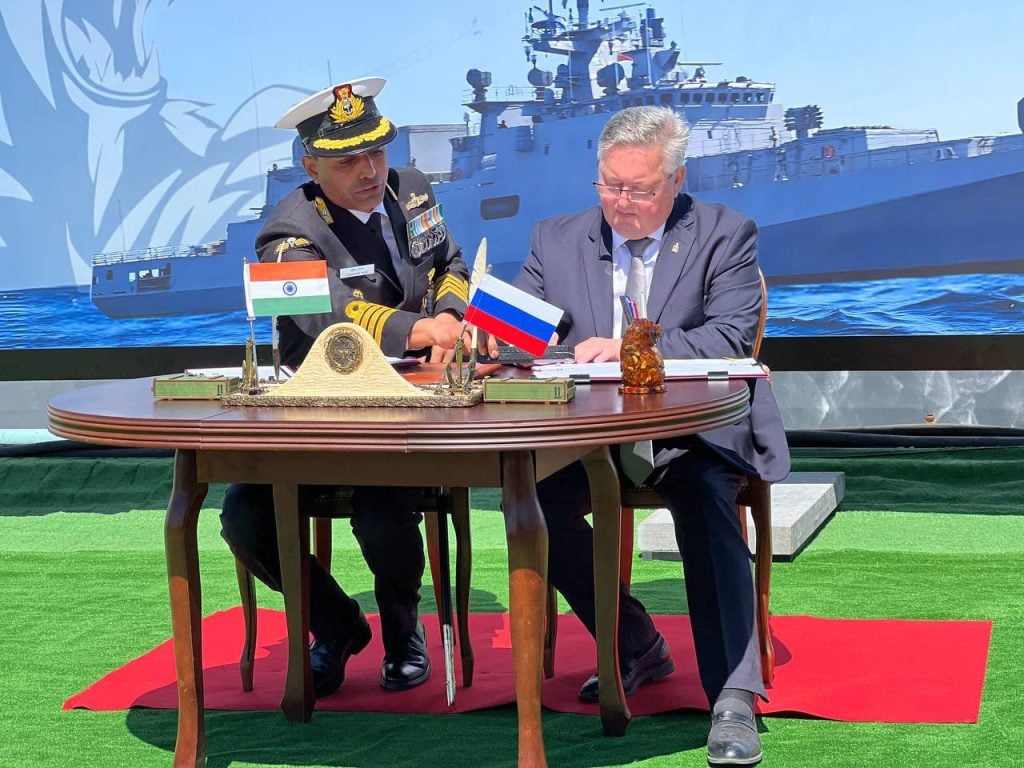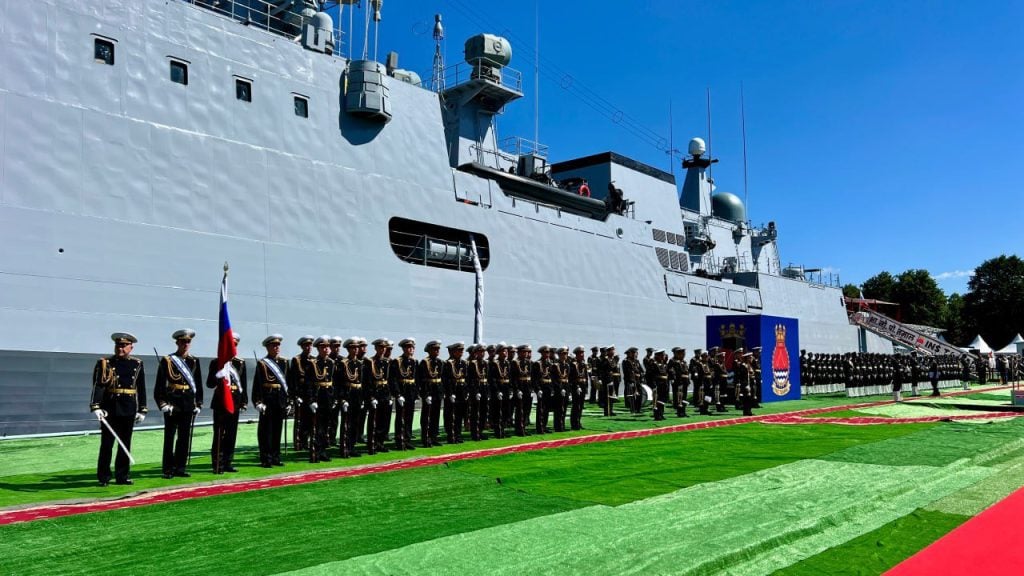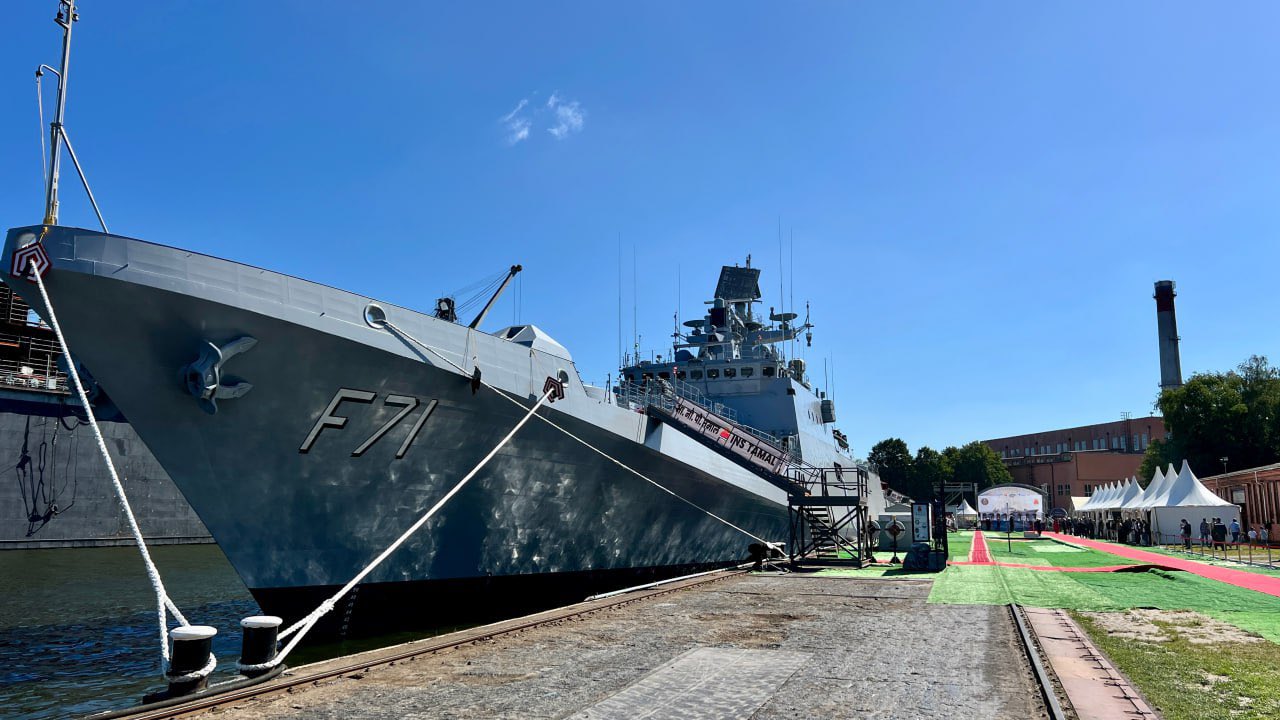The Indian Navy commissioned INS Tamal, its latest Tushil-class stealth frigate, at the Yantar Shipyard in Kaliningrad, Russia, in a ceremony that marked the end of India’s era of foreign-built warships. The commissioning was presided over by Vice Admiral Sanjay J Singh, Flag Officer Commanding-in-Chief of the Western Naval Command, in the presence of senior Indian and Russian defence officials.
INS Tamal is the second of the Tushil-class frigates, an upgraded variant of the Talwar and Teg-class warships derived from Russia’s Project 1135.6 (Krivak class). With this induction, India concludes its longstanding practice of importing frontline warships, signaling a full transition to domestic naval construction in line with the government’s Aatmanirbhar Bharat and Make in India initiatives.

The first of the class, INS Tushil, was commissioned in December 2024. Both ships are part of the Indian Navy’s Western Fleet, also known as the Sword Arm. Under the Inter-Governmental Agreement with Russia, two additional frigates—Triput and Tavasya—are being constructed at Goa Shipyard Limited through transfer of technology, underscoring the shift toward self-reliant production.
INS Tamal features more than 30 percent indigenous content, including the BrahMos long-range cruise missile. The ship is armed with Shtil vertical launch surface-to-air missiles, an upgraded A190 100 mm gun, anti-submarine rocket systems, heavyweight torpedoes, and advanced radar and electronic warfare suites. New-generation sensors such as the EO/IR Sandal V system enhance situational awareness, while network-centric warfare capabilities are supported through modern SATCOM, data links, and secure communication systems.

Its aviation facilities allow for operations by Kamov-28 multirole helicopters and Kamov-31 airborne early warning helicopters, significantly extending the ship’s operational envelope. Powered by a COGAG propulsion system, Tamal achieves speeds above 30 knots with extended endurance and a high firepower-to-tonnage ratio.
The Tushil-class project is among the largest foreign naval shipbuilding contracts executed globally and symbolizes the historical depth of Indo-Russian defence ties. The legacy dates back to the mid-1960s, when India, unable to secure advanced naval systems from Western nations, turned to the Soviet Union. The USSR provided submarines, missile boats, and supersonic fighters, enabling India to strengthen its maritime forces and achieve decisive outcomes during the 1971 war.
The Indo-Russian partnership continued to flourish post-1971, with key equipment transfers including Nanuchka and Kashin class vessels, Kilo class submarines, maritime patrol aircraft like the TU-142 and IL-38, and eventually the retrofitted aircraft carrier INS Vikramaditya. The joint development of the BrahMos missile further cemented this cooperation.
INS Tamal’s commissioning marks not just the addition of a potent warship to India’s fleet, but also the symbolic close of a chapter that saw India emerge as a major naval power with support from a longstanding ally. As India now focuses on indigenous shipbuilding, the legacy of this partnership remains embedded in the Navy’s operational strength and strategic growth.







